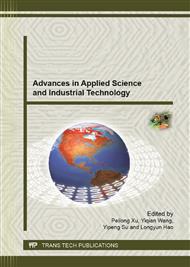p.35
p.39
p.45
p.49
p.54
p.59
p.63
p.67
p.71
Correlation between Slurry Pore Former Content and Electrochemical Performance of Solid Oxide Fuel Cells with an Aqueous Tape Casted Anode
Abstract:
Nickel oxide/yttrium stabilized zirconia (NiO/8YSZ) anodes with different amounts of pore formers for anode used for solid oxide fuel cell have been prepared by aqueous tape casting technique. The zeta potential of NiO/8YSZ aqueous suspensions with and without dispersants was characterized. Moreover, the viscosity of NiO/8YSZ aqueous suspensions with different amount of dispersants and pore formers were studied by the concentric cylindrical rotational viscometer. The microstructures of the anode with different amounts of pore formers were also studied by SEM. The electrochemical performance of the single cell with different amounts of pore formers (modified by 0.8 wt% of polyvinyl pyrrolidone (PVP) over graphite) was evaluated between 700 and 800 °C with hydrogen as the fuel and air as the oxidant. It was observed that the maximum power density of the single cell with the optimum amount of graphite content (20wt%) measured was over 0.8 Wcm-2 at 800 °C and the area specific resistance value was as low as 0.79Ωcm2. The study allowed identifying optimum amount of graphite modified by PVP as the most promising pore formers for the production of supporting anodes prepared by aqueous tape casting for intermediate temperature solid oxide fuel cell application.
Info:
Periodical:
Pages:
54-58
Citation:
Online since:
September 2013
Authors:
Price:
Сopyright:
© 2013 Trans Tech Publications Ltd. All Rights Reserved
Share:
Citation:


